clancrozier.com
Armstrong;
Clan Crozier Wikipedia;
https://en.wikipedia.org/wiki/Clan_Crozier
Is being considered for deletion. Trying to make Clan Crozier, a Vanquish Clan, Unvanquish and to Remain Unvanquished like the Armstrong.
The Gorrenberry Elwald, are also vanquished. First come the Crozier, they are much more important.
Feel the Gorrenberry Elwald are kept Vanquished because of the proposed Windy Edge (Hermitage Castle) Infinis Wind farm.
By the bias mapping one can tell that the Scottish Border Council is supporting it (would like to make a dated perception; that the Scottish Borders Council is against it but there superseding them is the Scottish Government with English Government support, showing non support of Scottish/English border heritage which is spread internationally by border migration into the Plantations 6/3/2016 MSE) , along with corporation Northern British Windpower NBW, may be trying to change it to NBWP because of their past history, of which a Cessford -Ker is linked to (Duke of Roxburghe), Ferniehirst Kerrs are linked to (Chief of the Kerr), and Redheugh is linked to (Chief of the Elliot).
Note;
Though Infinis Windy Edge Wind Farm near Hermitage Castle was voted against by the Scottish Borders Council
http://www.bbc.com/news/uk-scotland-south-scotland-33310305
it now is in appeal;
Response, I am receiving trying to include;
Google book showing Robert of Redhuegh deed/sasine
Wikipedia Clan Crozier is up for deletion;
https://en.wikipedia.org/wiki/Clan_Crozier
Response from the one above;
Hopefully people will realize the Clan Crozier does not need to remain a vanquished clan and should be Unvanquished as their allied clan the Armstrong are and will speak up for them.
What I was trying to say which included that which has been censored;
Please share.
On Wiki Clan Elliot website 12/9&19/2015
The Clan Eliott Wikipedia has been hijacked it does not contained history of THE NAME, as expressed by the chief’s father and grandmother;
https://en.wikipedia.org/wiki/Clan_Eliott
Basic to THE NAME on in the History of The Elliot Clan Society;
http://www.elliotclan.com/history/the-name/
Hopefully people will realize the Clan Crozier does not need to remain a vanquished clan and should be Unvanquished as their allied clan the Armstrong are and will speak up for them.
On Wiki Clan Elliot website 12/9&19/2015
It is even basic to the German Wikipedia Clan Elliot website;
https://de.wikipedia.org/wiki/Clan_Elliot
Nach der Legende kommt das Extra-“t” in Elliott von der Bekehrung der Elliotts zum https://de.wikipedia.org/wiki/Clan_Elliot
Christentum und soll ein Kreuz symbolisieren. Die unterschiedliche Schreibweise wird in diesem Reim verdeutlicht:
The double L and single T
Descent from Minto and Wolflee,
The double T and single L
Mark the old race in Stobs that dwell.
The single L and single T
The Eliots of St Germains be,
But double T and double L,
Who they are nobody can tell.
Robert Bell dichtete in “The Book of Scots-Irish Family Names” hinzu: “For double L and double T, the Scots should look across the sea!”
By not having this saying which identifies all Eliot, Eliott, Elliot, and Elliott the web page has been high jacked.
Mark Elliott 12/20/2015
Been trying to shake the Armstrong, but as a person of numbers have not been able to. They are Norsemen of a clan base, which try to get people who recognize them to do things for them. Norsemen do things on their own and only require sometimes and representative to take care of those people who do not. In the pass as below they accept a Danish, not leader but chief/follower. Though do not like it because I do things numerically, and have to follow their numbers, being of Danish/German, as the the time of Siward the Beorn, seem to be substituted in, but do not care for it because like to be somewhat illusive, being and Elfwald/Elwald.
from the ARMSTRONG CHRONICLES James L Armstrong
The family name of Siward was Beorn, and the
name Fairbairn came from the Fairy Bear or Fay
Bairn. The name was therefore applied to the stories
of Siward and his father, which were called The Fairy
Bear Stories. (See Kingsley, Bromton.)
Here is a list of the different forms of Siward’s name.
Upon the Border he was called Suord or Sword, and
also Dagger the Strong. (Boethius, William Stewart,
Richardson.) Ingulph of Croyland called him Siword
and Digr the Strong. William of Malmesbury called
him Siward and Digera, but also gives the more ancient
form of Swaerta. In the Anglo-Saxon Chronicles he
was called Siward, Sigwarth, Siwarde Eorle, and Sige-
waid Beam. Roger de Hoveden called him Strennus
Dux Northumberland. In Exploits of the Border he is
called Sibert. In the Chronicles of Bromton it is said
of him, ” De qua filium nomine Bernum aures ursines
habentem & in comitatu jure materno succedentum
progcnuit, succcssu vcro tcmporis Comes istc Bcrnus in
Armus Strenus filium habuit quem Siwardum appclla-
vir.” Bromton also calls him Siward son of Beorn,
father of Osbern, Siward Beorn, and Sigward Digr.
Kingsley, quoting from old English chronicles, calls
him Son of the Fairy Bear. In the Irish records he
was called The Strong. In the Terwinney records
he was called Fayborn and the Arm Strong. In old
manuscripts brought over by Armstrongs to North
Carolina from Londonderry, Ireland, in 171 7, he was
called The Strong.
OF this Siward, who was a person famous in his time, as
shall be further shewed anon, and of Giantlike sta-
ture, I may not omit what is recorded of him as to
his parentage by the Monk of Jervaulx.
The stout Earl Beorn had issue a son named Siward,
who after a time quitting his paternal Inheritance in
Denmark took shipping and with fifty of his retinue
arrived in the Islands called Oschades, where meeting
with a fierce Dragon he conquered him in Single Com-
bat and forced him to flee the land. Having so done he
put to sea again and landed in Northumberland to seek
another Dragon. When walking in a wood he met
with a reverend old man [Odin] who told him, that he
fought that Dragon which he could not find. But said
he, get you to your ship again and sail southwards to
the mouth of the river Thames which will bring you
to the wealthy city of London. And so parting with
him he gave him a standard called Ravelandeys which
signifieth “The Raven of Earthly Terror” who there-
upon coming safely to London was nobly received by
King Edward [the Confessor] with promise of no small
honor if he would stay with him.
Whereupon Siward consenting, after thanks given to
the King departed the Court but meeting with Tosti
Earl of Huntingdon upon a certain bridge was by him
most unworthily affronted by soiling with dirt, yet Si-
ward though he took that usage very disdainfully did
not then lift up his hand against him but on his return
meeting him in the same place he cut off Tosti’s head
and carried it to the King, who hearing the truth of
that passage gave unto Siward the Earldom of Hunt-
ingdon which Tosti had possessed.
Not long after this the kingdom being much infested
by Danes the great men of the land consulting with the
King did advise that the little devil should be first ex-
posed to the great devil (id est) that Earl Siward should
be placed in that part of England which was most
likely to be invaded by the Danes. Whereupon the
king committed to his charge the Counties of West-
moreland, Cumberland and Northumberland under
which title of Northumberland he had the administra-
tion of that Earldom from Humber to Twede, all
which he governed in peace victoriously subduing his
King’s enemies, afterwards he sent his son called Os-
berne-Bulax into Scotland there to get what he could
by conquest, who being there slain in battle and the
news thereof being brought to the Earl Siward his
father he enquired upon what part of his body he hap-
pened to have his death wound and being told that it
was on the forepart thereof he said I am glad that my
son was worthy of such an honorable funeral.
But considering the loss of his son as hath been said
he marched with an army into Scotland conquering
King Macbeth in open battle, wasted the kingdom and”
subjugating it to his own power constituted Malcolm
son to the King of Cumberland, in his stead.
And lastly apparently discerning his death he said
” How am I ashamed that I did not die in so many
battles but that I am reserved to thus expire as a beast.
Put on me therefore my armour of proof, girt me with
my sword apd reach me my helmet. Let me also have
my target in my left hand and my Gils Ax in my right
and so as the most valiant of soldiers I may die a soldier.
For in such sort it becomes a soldier to die and not as a
beast lying down to depart,” all which being done he
breathed his last at York in 1055, 13th year of the
reign of Edward the Confessor, and was then buried in
the cloyster of the Monastery of Galmanho which he
had founded.
This valiant Earl had to wife Alfleda Daughter to Al-
dred late Earl of Northumberland by whom he left issue
Waltheof afterward Earl of Northumberland as I shall
show anon and surviving her married a widow called
Godgive who for the health of her soul (by consent of
Edward the Confessor) had given to the abbey of Peter-
borough two fair lordships viz. Righole and Beolme St
Hospe, which Lordship of Righole after her death he
obtained by agreement with the monks to hold during
his life and then to return to the abbey.
Of his Lands I find no mention in the Conqueror’s
Survey than these, viz: Wilebi, Lochuthum, Aclum and
Englebi with the several hamlets then belonging to each
of them. (Dugdale.)
The Origins of the Armstrong
http://www.genealogy.com/users/l/a/t/Harrison-T-Latour-OK/GENE2-0083.html
Siward, the Fairbairn, was said to be of giant-like stature and a strong man, blue-eyed, very fair with light hair and beard. The legend goes that Siward took ship and sailed with 50 of his men from Danemark, arriving at what is today called the Shetland Islands, where he is said to have encountered a dragon which he slew in single combat. Dragons, as most of us know, are mythical creatures which the dictionary states were first defined as a large serpent. He apparently got a kick out of killing serpents, as he put out to sea again and finally landed in Northumbria where he began looking for another one to fight with. Here he met an old man who he thought was his god, Odin, who told him he had already killed the dragon and for him, Siward, to sail southward to the mouth of the Thames river which could bring him to the wealthy city of London (one would think that there would have been plenty of serpents there). The old man then gave him a standard (flag) to carry which signified The Raven of Earthly Terror (Edgar Allen Poe must have read about our ancestor!). He was received by Edward the Confessor, the King of England, with much ceremony and was made many promises if he would stay with the King and help him fight to retain his kingship.
The following story about Siward has endured. One day, as he was leaving the court after an audience with King Edward, he was confronted by Tostig, Earl of Huntington, on a bridge, who insulted him by throwing dirt upon him. Siward took no offense at the time, but on confronting him on his return on the same bridge, the story goes that he decapitated Earl Tostig and carried his head back to the King. The King, being suitably impressed by this brawny warrior with violent tendencies, wisely awarded Siward the Earldom of Huntington in addition to Northumbria.
As Siward’s reputation as a brave and valiant knight continued to increase, so also did the Kingdom of Edward continued to be visited by other Danes who held him and his people in much less esteem than did our good Siward. In fact, they became an ever-growing nuisance– arriving by ship and plundering the eastern coast of England. As the most of the havoc they created was located in Westmoreland, Cumberland and Northumbria Counties, some wise soul counseled the King to put Siward in charge of defending this area. While perhaps properly descriptive if not overly flattering, it was reportedly stated that it was best that the little devil should be first exposed to the great devil.
Siward governed in peace the territory of Northumbria which extended from the Humber River to the Tweed River on the border of Scotland, and was greatly respected and loved by the Northumbrians who were chiefly of Danish extraction (better a Danish devil than an English saint?). He orchestrated several forays from Northumbria to the north and was successful in putting all territory under the command of the King of England.
The surname of Siward was Beorn (meaning bear) and relates to the Nordic legends of the Fairy Bear or Fay Bairn, from which the Border name of Fairbairn, originated. The name was applied to the stories of Siward and his father and were called the Fairy Bear Stories.
Siward had a sister (who’s name is not known) who married Duncan, the King of Scotland from 1034-1040 AD. Prior to his death in 1056, Siward supported his nephew Malcolm, the rightful heir, against Shakespeare’s famous King Macbeth of Scotland who had killed Malcolm’s father King Duncan.
By 1070, the Battle of Hastings (1066) was over and England had been conquered by William of Normandy. Malcolm III had been on the Scottish throne since the death of Macbeth in 1057 and Siward has been dead since 1056. His first son, Osberne Bulax, was killed in the battle of Macbeth in 1054, some say by the hand of Macbeth, himself. Osberne is also said to have married the daughter of Lady Godiva. Siward’s second son, Waltheof (which means forest thief – nice name!) is alternately in and out of favor with William the Conqueror. For example, his wife, Juditha, is a niece of William and in 1069 we find that King William restored the earldom of Northumbria to Waltheof. However, in 1076 he was betrayed by King William and brought to the outskirts of Westminster where he was beheaded.
Osberne Bulax had two sons named Siward Barn the Red and Siward Barn the White (Fairbeorn). Not much is known of Siward the Red, but it is known that Siward Barn the White became a refugee and fled to Scotland with many other men of distinguished renown including Edgar, the Atheling, the rightful King of England.
Waltheof left no male descendant. However, Matilda (called Maude), his daughter (after her first husband died) married King David I, the son of King Malcolm of Scotland and his wife Margaret, who was the sister of Edgar the Atheling mentioned above. Both the Scottish and English royalty have descended from Waltheof to the present day.
Malcolm III, the 85th King of Scotland greeted Siward Barn the White (his cousin) with great kindness, and together they fought against William the Conqueror, driving him out of Northumbria. An interesting story apparently involves Siward the White Fairbeorn during a battle against England. During this battle, King Malcolm’s horse was killed under him partially crippling him and young Siward fought his way to the King’s side. Passing his left arm around the King’s body under his arms, he reportedly fought his way with a great Sword through the enemy to a place of safety. For his courageous act he was knighted by the King, given land and a castle on the Scottish border, and from that time on was referred to as the Sword of the Strong Arm (or Armstrong). This was how he and his descendants came to inherit the lands of Mangerton in Liddesdale.
These lands, known as the Debateable Land, were disputed for centuries by both Scotland and England. As time went on they were protected by neither nation and, as the Armstrongs were of both Anglo and Danish descent, they were entirely different from the Celtic Clans of Northern Scotland. As a result of blood ties and loyalties not unlike those of the Mafia in Sicily some centuries later, these Clans avenged blood for blood for centuries. In this environment it is not hard to understand how a reputation for plundering, bloodshed, and violence came to be tied to these marauders of the border lands.
THE ORIGINS OF THE ARMSTRONGS
http://www.oocities.org/thetropics/1968/armsclnc.html
Where did the Armstrongs come from? What is their history?
When did they first arrive in the United States?
Where have the various branches of the family gone?
Although there is more than one story about the origins of the
Armstrongs, perhaps one of the most widely accepted is the saga of
Siward, The Viking, also know as Siward Fairbairn of the Strong Arm
(see Reference Listing #1). Siward was the son of a Danish King and
lived in England from about 995 till his death in 1056. In those days, the
ruler of any small territory was a king, so exactly where his father, Hringo,
King of Upland, also known as Earl Beorn, would fall on the yardstick of
earthly royalty is not clear; however, at the very least, he would be
considered of noble birth.
Whether Siward was born in England is also not known for certain.
However, he was the first to carry the name of Armstrong and was listed in
the History of England as having earned the right to the title of Earl of
Northumbria (Northumberland) having been conferred the title by
Edward the Confessor.
Siward, the Fairbairn, was said to be of giant-like stature and a strong
man, blue-eyed, very fair with light hair and beard. The legend goes that
Siward took ship and sailed with 50 of his men from Danemark, arriving at
what is today called the Shetland Islands, where he is said to have
encountered a dragon which he slew in single combat. Dragons, as most of
us know, are mythical creatures which the dictionary states were first defined as a large serpent. He apparently got a kick out of killing serpents, as he put out to sea again and finally landed in Northumbria where he began looking for another one to fight with. Here he met an old man who he thought was his god,
Odin, who told him he had already killed the dragon and for him, Siward, to sail southward to the mouth of the Thames river which could bring him to the wealthy city of London (one would think that there would have been plenty
of serpents there). The old man then gave him a standard (flag) to carry which signified The Raven of Earthly Terror (Edgar Allen Poe must have read about our ancestor!). He was received by Edward the Confessor, the King of England, with much ceremony and was made many promises if he would stay with the King and help him fight to retain his kingship.
The following story about Siward has endured. One day, as he was leaving the court after an audience with King Edward, he was confronted by Tostig,
Earl of Huntington, on a bridge, who insulted him by throwing dirt upon him. Siward took no offense at the time, but on confronting him on his return on the same bridge, the story goes that he decapitated Earl Tostig and carried his head back to the King. The King, being suitably impressed by this brawny warrior with violent tendencies, wisely awarded Siward the Earldom of Huntington in addition to Northumbria.
As Siward’s reputation as a brave and valiant knight continued to increase, so also did the Kingdom of Edward continued to be visited by other Danes who held him and his people in much less esteem than did our good Siward. In fact, they became an ever-growing nuisance– arriving by ship and plundering the eastern coast of England. As the most of the havoc they created was located in
Westmoreland, Cumberland and Northumbria Counties, some wise soul
counseled the King to put Siward in charge of defending this area. While perhaps properly descriptive if not overly flattering, it was reportedly stated that it was best that the little devil should be first exposed to the great devil.
Siward governed in peace the territory of Northumbria which extended from the Humber River to the Tweed River on the border of Scotland, and was greatly respected and loved by the Northumbrians who were chiefly of Danish extraction (better a Danish devil than an English saint?). He orchestrated several forays from Northumbria to the north and was successful in putting all territory under the command of the King of England.
The surname of Siward was Beorn (meaning bear) and relates to the Nordic legends of the Fairy Bear or Fay Bairn, from which the Border name of Fairbairn, originated. The name was applied to the stories of Siward and his father and were called the Fairy Bear Stories.
Siward had a sister (who’s name is not known) who married Duncan, the
King of Scotland from 1034-1040 AD. Prior to his death in 1056, Siward
supported his nephew Malcolm, the rightful heir, against Shakespeare’s famous King Macbeth of Scotland who had killed Malcolm’s father King Duncan.
By 1070, the Battle of Hastings (1066) was over and England had been
conquered by William of Normandy. Malcolm III had been on the Scottish throne since the death of Macbeth in 1057 and Siward has been dead since 1056.
His first son, Osberne Bulax, was killed in the battle of Macbeth in 1054, some say by the hand of Macbeth, himself. Osberne is also said to have married the daughter of Lady Godiva. Siward’s second son, Waltheof (which means forest thief – nice name!) is alternately in and out of favor with William the Conqueror.
For example, his wife, Juditha, is a niece of William and in 1069 we find that King William restored the earldom of Northumbria to Waltheof. However, in 1076 he was betrayed by King William and brought to the outskirts of Westminster where he was beheaded.
Osberne Bulax had two sons named Siward Barn the Red and Siward Barn the White (Fairbeorn). Not much is known of Siward the Red, but it is known that Siward Barn the White became a refugee and fled to Scotland with many other men of distinguished renown including Edgar, the Atheling, the rightful
King of England.
Waltheof left no male descendant. However, Matilda (called Maude), his
daughter (after her first husband died) married King David I, the son of King
Malcolm of Scotland and his wife Margaret, who was the sister of Edgar
the Atheling mentioned above. Both the Scottish and English royalty have
descended from Waltheof to the present day.
Malcolm III, the 85th King of Scotland greeted Siward Barn the White
(his cousin) with great kindness, and together they fought against
William the Conqueror, driving him out of Northumbria. An interesting story apparently involves Siward the White Fairbeorn during a battle against England. During this battle, King Malcolm’s horse was killed under him partially crippling him and young Siward fought his way to the King’s side.
Passing his left arm around the King’s body under his arms, he reportedly
fought his way with a great Sword through the enemy to a place of safety.
For his courageous act he was knighted by the King, given land and a
castle on the Scottish border, and from that time on was referred to as the
Sword of the Strong Arm (or Armstrong). This was how he and his descendants came to inherit the lands of Mangerton in Liddesdale.
These lands, known as the Debateable Land, were disputed for centuries
by both Scotland and England. As time went on they were protected by neither nation and, as the Armstrongs were of both Anglo and Danish descent, they were entirely different from the Celtic Clans of Northern Scotland. As a result of blood ties and loyalties not unlike those of the Mafia in Sicily some centuries later, these Clans avenged blood for blood for centuries. In this environment it is not hard to understand how a reputation for plundering, bloodshed, and violence came to be tied to these marauders of the border lands.
Little is said about the Armstrongs after the building of the Mangerton Tower, probably in 1135. Apparently no Chief was immediately recognized until 1300 when Alexander became the first Lord of Mangerton. Stories abound of the enmity between the Armstrongs and their neighbors the Lords of Soulis.
For example, Alexander, the second Lord of Mangerton, was treacherously killed by William, Lord Soulis, after being invited to a feast at his castle.
The Armstrong Clan flourished, however, and by the early 1500s, the
Laird of Mangerton was able to gather 3,000 mounted fighters. One Scottish king said that while there were Armstrong and Elliots on the Border, Scotland was safe. The Armstrongs were ambassadors, earls, knights, farmers and above all, fighters. For example, Gilbert Armstrong, third son of Alexander, the second Lord of Mangerton, a distinguished clergyman and diplomat was the Canon of Moray from 1361 to 1375. In 1363 he served as a Commissioner to England for the ransom of King David II of Scotland who was held as a prisoner in England. In all there were ten Lords of Mangerton from Alexander through Archibald Armstrong who was denounced as a rebel in 1603, deprived of his lands in 1610, and executed at Edinburgh.
What happened to change our fortunes so greatly? James IV of Scotland was on good terms with the Scottish Border chiefs and he regularly visited and was entertained by them. His son, James V of Scotland, on the other hand, ruled by decree from distant Edinburgh and did little to protect his Border subjects or support them against repeated English incursions. In fact, in 1530, James V, with some 8000 men at arms surged into the borderlands and the betrayal of the Armstrongs began. Johnnie Armstrong, Laird of Gilknockie, was a much beloved and highly respected member of the Armstrong Clan, who James V invited to parlay. Accepting the King’s invitation, he and 50 of his men went to meet with the King in good faith. Instead, they were seized and summarily executed. This incendiary act outraged the Armstrongs and their allies and set the Borders ablaze with rage and indignation– increasing the violence and bloodshed it was intended to suppress. At the prodding of the King, the Church also entered the fray and the Armstrong’s and other Border reivers were cursed by the Church excommunicated enmasse. The Armstrongs, with other Borderers, were thus left to their own devices so far as mutual self-defense was concerned.
Receiving neither aid nor comfort from the Scottish or from the English
Crowns, the Armstrongs and other Border clans were forced to become makers of their own laws and protection. After Edward I of England slaughtered thousand of Scots at Berwick, self-defense and preservation became their paramount endeavor. The Borderers were forced to become the best in what had become a profession – a greater thief (raider) did never ride was one complimentary
description of an Armstrong, Jock O’Syde, in Liddesdale. They would raid by night and attend Carlisle Market by day, greeted by all who knew them. Unable to do more than bare subsistence farming, the cupboard was frequently bare.
When the lady of the house served her Laird a pair of spurs on a plate, this
meant it was time to ride and raid the other side of the Border yet again.
The bloodshed and violence continued. In 1603, Elizabeth I died and James VI of Scotland (James I of England) was declared her heir. After a splendid coronation at Westminister Abbey, James settled down to life at the English
Court. One of his highest priorities was the suppression of the Border families
like the Armstrongs, as he was afraid that their incursions would make him
unpopular in England. As a result, he established powerful landlords in the
Debateable Land around Liddesdale and Eskdale, and appointed Sir William
Cranston to put to death all within two miles of the Border. A large number of
Armstrong reivers were tortured and hung at the Market Cross in Edinburgh, at
Carlisle and no doubt on a number of local gibbets. The last Armstrong raid ofany importance took place in 1611 and for it, Lance Armstrong of Whithaugh- along with others – was executed a year later. Cranston generated the firstforced migrations to Ireland and the subsequent Undertaking of the Plantationof Ulster in 1608. In the 18th century, farms were merged and more migrations followed.
The Armstrong lands of Mangerton passed into the hands of the Buccleuchs.
Many members of the once powerful Armstrong Clan were shipped off to
Ireland, including Johnnie Armstrong’s grandson, William who settled in
Fermanagh. Thus, many who had survived found themselves on the Solway shore waiting for emigrant ships to take them from an inhospitable homeland.
Homeless, leaderless, and sometimes penniless, they went westward to Ireland and North America, and south to Australia and New Zealand in search of new beginnings. Perhaps the most famous descendent of the Fermanagh Armstrongs was Neil Armstrong, the American astronaut and the first human to set foot on the moon during the Apollo 11 mission in 1969.
The dissolution and dispersal of the Armstrongs followed some two hundred years of Border brigandage and treachery, ending in the depopulated areas and vast estates of the present day Whithaugh, Mangerton and Gilknockie, which had at one time been the Clan’s greatest strongholds. A proud and courageous family had been reduced to a smattering of broken men. The Armstrongs have been scattered and now have neither chief nor recognized leader. However, as individuals the Armstrongs have survived and have lived up to their clan motto
of “Invictus Maneo” or “We Remain Unvanquished.”
ARMSTRONG ORIGINS
http://mysite.verizon.net/vze7tsc4/id116.html
Although there is more than one story about the origins of the Armstromg’s, perhaps one of the most widely accepted is the saga of Siward. The Viking, also known as Siward Fairbain of the Strong Arm. Siward was the son of a Danish King and lived in England from about 995 till his death in 1056. In those days, the ruler of any small territory was a king, so exactly where his father, Hringo, King of Upland, also known as Earl Beorn, would fall on the yardstick of earthly royalty is not clear; however, at the very least, he would be considered of noble birth.
Whether Siward was born in England is also not known for certain. However, he was the first to carry the name of Armstrong and was listed in the History of England as having earned the right to the title of Earl of Northumbria (Northumberland) having been conferred the title by Edward the Confessor.
Siward, the Fairbairn, was said to be of giant-like stature and a strong man, blue-eyed, very fair with light hair and beard. The legend goes that Siward took ship and sailed with 50 of his men from Danemark, arriving at what is today called the Shetland Islands, where he is said to have encountered a dragon which he slew in single combat. Dragons, as most of us know, are mythical creatures which the dictionary states were first defined as a large serpent. He apparently got a kick out of killing serpents, as he put out to sea again and finally landed in Northumbria where he began looking for another one to fight with. Here he met an old man who he thought was his god, Odin, who told him he had already killed the dragon and for him, Siward, to sail southward to the mouth of the Thames river which could bring him to the wealthy city of London (one would think that there would have been plenty of serpents there). The old man then gave him a standard (flag) to carry which signified The Raven of Earthly Terror (Edgar Allen Poe must have read about our ancestor!) He was received by Edward the Confessor, the King of England, with much ceremony and was made many promises if he would stay with the King and help him fight to retain his kinship.
The following story about Siward had endured. One day, as he was leaving the court after an audience with King Edward, he was confronted by Tostig, Earl of Huntington, on a bridge, who insulted him by throwing dirt upon him. Siward took no offense at the time, but on confronting him on his return on the same bridge, the story goes that he decapitated Earl Tostig and carried his head back to the King. The king, being suitably impressed by this brawny warrior with violent tendencies, wisely awarded Siward the Earldom of Huntington in addition to Northumbria.
As Siward’s reputation as a brave and valiant knight continued to increase, so also did the kingdom of Edward continued to be visited by other Danes who held him and his people in much less esteem than did our good Siward. In fact, they became an ever-growing nuisance – arriving by ship and plundering the eastern coast of England. As the most of the havoc they created was located in Westmoreland, Cumberland and Northumbria Counties, some wise soul counseled the King to put Siward in charge of defending this area. White perhaps properly descriptive if not overly flattering, it was reportedly stated that it was best that the little devil should be first exposed to the great devil.
armst-mp01a.jpg
Siward goverened in peace the territory of Northumbria which extended from the Humber River to the Tweed River on the border of Scotland, and was greatly respected and loved by the Northumbrians who were chiefly of Danish extraction (better a danish devil than an English saint?). He orchestrated several forays from Northumbria to the north and was successful in putting all territory under the command of the King of England.
The surname of Siward was Beorn (meaning bear) and relates to the Nordic legends of the Fairy Bear or Fay Bairn, from which the Border name of Fairbairn, originated. The name was applied to the stories of Siward and his father and were called the fairy Bear Stories.
Siward had a sister (who’s name is not known) who married Duncan, the King of Scotland from 1034-1040 AD. Prior to his death in 1056, Siward suppoeted his nephew Malcolm, the rightful heir, against Shakespeare’s famous King Macbeth of Scotland who had killed Malcolm’s father King Duncan.
By 1070, the Battle of Hastings (1066) was over and England hsd been conquered by William of Normandy. Malcolm III had been on the Scottish throne since the death of Macbeth in 1057 and Siward has been dead since 1056. His first son, Osberne Bulax, was killed in the battle of Macbeth in 1054, some say by the hand of Macbeth, himself. Osberne is also said to have married the daughter of Lady Godiva. Siward’s second son, Waltheof (which means forest thief – nice name!) is alternately in and out of favor with William the Conqueror. For example, his wife, Juditha, is a niece of William and in 1069 we find that King William restored the earldom of Northumbria to Waltheof. However, in 1076 he was betrayed by King William and brought ot the outskirts of Westminister where he was beheaded.
Osberne Bulax had two sons named Siward Barn the Red and Siward Barn the White (Fairbeom). Not much is known od Siward the Red, but it is known that Siward Barn thw White became a refugee and fled to Scotland with many other men of distinguished renown including Edgar, the Atheling, the rightful Kinf of England.
Waltheof left no male descendant. However, Matilda (called Maude), his daughter (after her first husband died) married King David I, the son of King Malcolm of Scotland and his wife Margaret, who was the sister of Edgar the Atheling mentioned above. Both the Scottish and English royalty have descended from Waltheof to the present day.
mangerton01.jpg
Malcolm III, the 85th King of Scotland greeted Siward Barn the White (his cousin) with great kindness, and together they fought against William the Conqueor, driving him out of Northumbria. An interesting story apparently involves Siward the White Fairbeorn during a battle against England. During this battle, King Malcolm’s horse was killed under him partially crippling him and young Soward fought his way to the King’s side. Passing his left arm around the King’s body under his arms, he reportedly fought his way with a great Sword through the enemy to a place of safety. For his courageous act he was knighted by the King, given land and a castle on the Scottish border, and from that time on was referred to as the Sword of the Strong Arm (or Armstrong). This was how he and his decendants came to inherit the lands of MANGERTON in Liddesdale.
These lands (shown above), known as the Debateable Land, were disputed for centuries by both Scotland and England. As time went on they were protected by neither nation and, as the Armstrongs were of both Anglo and Danish descent, they were entirely different from the Celtic Clans of Northern Scotland. As a result of blood ties and loyalties not unlike those of the Mafia in Sicily some centuries later, these Clans avenged bolld for blood for centuries. In this environment it is not hard to understand how a reputation for plundering, bloodshed, and violence came to be tied to these marauders of the border lands.
Little is said about the Armstrongs after the building of the Mangerton Tower, probably in 1135. Apparently no Chief was immediately recognized until 1300 when Alexander became the first Lord of Mangerton. Stories abound of the enmity between the Armstrongs and their neighbors the Lodrs of Soulis, after being invited to a feast at his castle. The Armstrong Clan flourished, however, and by the early 1500s, the Laird of Mangerton was able to gather 3,000 mounted fighters. One Scottish king said that while there were Armstrong and Elliots on the Border, Scotland was safe. The Armstrongs were ambassadors, earls, knights, farmers and above all, fighters. For example, Gilbert Armstrong, third son of Alexander, the second Lord of Mangerton, a distinguished clergyman and diplomat was the Conon Moray from 1361 to 1375. In 1363 he served as a Commissioner to England for the ransom of King David II of Scotland who was held as aprisoner in England. In all there were ten Lords of Mangerton from Alexander through Archibald Armstrong who was denounced as a rebel in 1603, deprived of his lands in 1610, and executed at Edinburgh.
What happened to change our fortunes so greatly ? James IV of Scotland was on good terms with the Scottish Border chiefs and he regularly visited and was entertained by them. His son, James V of Scotland, on the other hand, ruled by decree from distant Edinbaugh and did little to protect his Border subjects or support them against repeated English incursions. In fact, in 1530, James V, with some 8000 men at arms surged into the borderlands and the betrayal of the Armstrongs began. Johnnie Armstrong, Laird of Gilnockie, was a much beloved nad highly respected member of the Armstrong Clan, who James V invited to parlay. Accepting the King’s invitation, he and 50 of his men went to meet with the King in good faith. Instead, they were seized and summarily executed. This incendiary act outraged the Armstrongs and their allies and set the Borders ablaze with rage and indignation – increasing the violence and bloodshed it was intended to suppress. At the prodding of the King, the Church also entered the fray and the Armstrong’s and other Border reivers were cursed by the Church excommunicated enmasse. The Armstrongs, with other Borderers, were thus left to their own devices so far as mutual self-defense was concerned.
Receiving neither aid nor comfort from the Scottish or from the English Crowns, the Armstrongs and other Border clans were forced to become makers of their own laws and protection. After Edward I of England slaughtered a thousand of Scots at Berwick, self-defense and preservation became their paramount endeavor. The Borderers were forced to become the best in what had become a profession – a greater thief (raider) did never ride was one complimentary description of an Armstrong. Jock O’Syde, in Liddesdale. They would raid by night and attend Carlisle Market by day, greeted by all who knew them. Unable to do more than bare subsistence farming, the cupboard was frequently bare. When the lady of the house served her Laird a pair of spurs on a plate, this meant it was time to ride and raid the other side of the Border yet again.
The bloodshed and violence continued. In 1603, Elizabeth I died and James VI of Scotland (James I Of England) was declared her heir. After a splendid coronation at Westminister Abbey, James settled down to life at the English Court. One of his highest priorities was the suppression of the Border families like the Armstrongs, as he was afraid that their incursions would make him unpopular in England. As a result, he established powerful landlords in the Debateable Land around Liddesdale and Eskdale, and appointed Sir William Cranston to put to death all within two miles of the border. A large number of Armstrong reivers were tortured and hung at the Market Cross in Edinburgh, at Carlisle and no doubt on a number of local gibbets. The last Armstrong raid of any importance took place in 1611 and for it, Lance Armstrong of Whithaugh – along with others – was executed a year later. Cranston generated the first forced migrations to Ireland and the subsequent Undertaking of the Plantation of Ulster in 1608. In the 18th century, farms were merged and more migrations followed.
The Armstrong lands of Mangerton passed into the hands of the Buccleuchs. Many members of the once powerful Armstrong Clan were shipped off to Ireland, including Johnnie Armstrong’s grandson, William who settled in Fermanagh. Thus, many who had survived found themselves on the Solway shore waiting for emigrant ships to take them from an inhospitable homeland. Homeless, leaderless, and sometimes penniless, they went westward to Ireland and North America, and south to Australia and New Zealand in search of new beginnings. Perhaps the most famous descendent of the Fermanagh Armstrongs was Neil Armstrong, the Americam astronaut and the first human to set foot on the moon during the Apollo 11 mission in 1969.
riderblue01a.jpg
The dissolution and dispersal of the Armstrongs followed some two hundred years of Border brigandage and treachery, ending in the depopulated areas and vast estates of the present day Whithaugh, Mangerton and Gilnockie, which had at one time been the Clan’s greatest strongholds. A proud and courageous family had been reduced to a smattering of broken men. The Armstrongs have been scattered and now have neither chief nor recognized leader. However, as individuals the Armstrongs have survived and have lived up to their clan motto of ” Invictus maneo ” or ” We Remain Unvanquished. ”
Some other information on Armstrong by Lowell C. Armstrong;
An American Armstrongs interpretation to The Myth Stories of England
by Lowell C Armstrong
MSE 4/15/2014
The Rich Rucker question;
It has been noted that both you and I have been censored from, The Family Tree DNA, Clan Armstrong website, with no Clan Armstrong contacts listed, where we both consider ourselves Clan Armstrong. You being related to 90+% Clan Armstrong, and I migrating with them out of Germany to Bec,Northfolk, Rimington, Lancashire, to Cumbria, onto Canonbie, and into Liddesdale, Gorrenberry, onto Tullykelter, Fermanagh, then into the America Plantation, next to a Martin Armstrong of Sutton Massachusetts.
No link, because the Clan Armstrong as Scandinavians do not want to claim any leadership. The Bear, sticks the younger brother the Elk (moose, Elwald, Ellot line) with the problem, and tries to give him the only United Kingdom option of a Wm de Aliot line out of France.
Clan Armstrong, I have the right not to be vanquished and become unvanquished as you.
Scientific knowledge in today’s day and in the past can be rationalized, by Puritanical Norman thinkers, to make things to seem correct. Cotton Mather wrote on witchcraft, and Harvard judges hung witches, granddad Scottish; the accusers did it out of sport. Today’s DNA as applied to genealogy is like a metre (yard stick, elwand) measuring the width of a hair. Unless other viable information is inputted, Y-DNA relevancy carries that of the Harvard judges during the witch trials in Salem.
One way to reach further in the past is to use how a family story such as the Clan Armstrong Fair Bear story migrates with it’s people and how the language of these Germanic people migrate towards where the Scottish Borderlands is today.
Stories passed down through families become part of that family history, and the longer they are passed down, the greater their importance. One such story though likely started before the establishment of the surname Clan Armstrong which cares for the story is the Fairy Bear Legend;
Today with my own family history the story seems to have meaning of a migration story. From the personal names German elk/elch and the Danish elg, meaning elk(moose) then paired with the German -wald was likely Old German Elchwald, then Danish Elgwalt (German/Danish king), then traveling to the British Isles where elk(moose) are extinct elch/elk/elg became elf similar toulf which is wolf in Danish, The name personal name evolved into a surname becaming Elfwaldin Norfolk, with and Alan Elfwald of Bec, then in Rimington, Lanchashire, Robert Elwald the son of Alan, onto Liddesdale, Gorrenberry the name became the younger brother of Robert which received lands of Redheugh a William Elwald of Gorrenberry, then onto Tullykelter, Fermanagh Ulster, the name became from the alias Dan for Andrew, a Daniel Ellot. His grandson of the same name Daniel Ellot on to the American Plantation, with Puritan English the name becomeDaniel Elliot retaining the single “t” the way they today are spelling it on the Scottish Borders. Then his son of the same name Daniel Elliot moves onto ca1700 Sutton, Massachusetts, and settles on land next to a Martin Armstrong.
In the United Kingdom, I am a Clan Armstrong, because the Norman wolf (lou), ate the Danish elk (elg), and for the name Elliott, only the Normans survive. Being that Danish elk (elg) and Danish bear (bjørn) in the United Kingdom are friends, I can live among the Armstrong.
Correction; Place of migration origin is #2, migrating to both 1&3.
Correction on above; green is other Germanic languages.
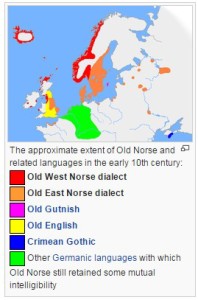
My family the family of the Elchwald, Elgwald, Elfwald, Elwald migrates with the family of the Fairy Bear (Fairbairn).
I am one step off in 25 to a von Ruecker/Rucker. It should be noted that from my understanding the word “von” like “de” means “of”, so the name Rucker may have a locality it is names after, but I have not been able to find it.
Family Tree DNA calculator, at more than 27 generations shows that my DNA is close to being 100% likelihood that were related.
It should be noted that the story of the Fairy Bear starts in Northern Germany, migrates to the borders and south Germany. Given surname distribution the pre Rucker family is from southern Germany, they likely carried the Die Missgeburt, (Armstrong Cronicles, ed Jame L. Armstrong) story with them south, and the pre Armstrong surname of the same Y-DNA group as the Rucker migrated north with their versions of the Fair Bear story.
The Ruckers, Armstrong, and Elwald (Ellot), likely migrated from where the Old Norse languages began in Northern Germany.
Fair Bear Origins
Old Norse Dialect migrated with the Germanic-Danish Armstrong into the British Isles and north to the borderlands, Crimean Gothic language of these Danes traveled south and carried the origins of the Fair (light in skin color, but darker that Osborn-White Bear) Bear story with them. where the Old Norse (Proto-Germanic-Danish) language had its beginning, is when the Bear (Beorn), Elk(moose, Elg), and Wolf (Danish Ulf, Norman Lou), of the Fair Bear story residing together, with the wolf eating the Elk, and the Bear and Elk were living as brothers, in this land.
R. Rucker;
This is the answer censored by big brother (Clan Armstrong), remember they are not going to censor me out, because my characteristics, are German, Danish, Northumbria, Borders, Ulster, and the Plantations like theirs. The English-Scots do not like to be told they are German, and your family is from where and in accordance to the Fairy Bear story, where the Armstrong came from in Germany, and the Old Norse-Proto Germanic language had it’s origins.
MSE 10/1/2015

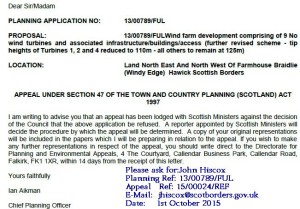


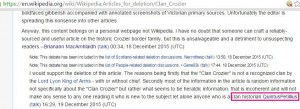
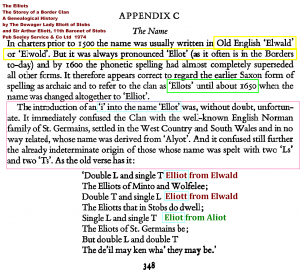
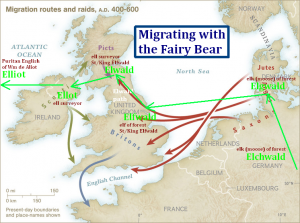
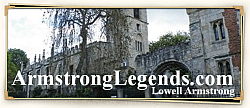
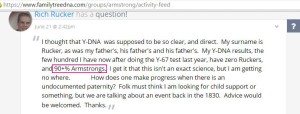

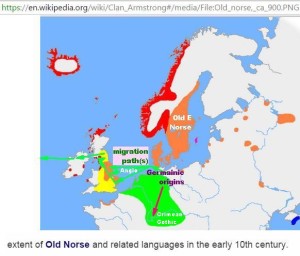
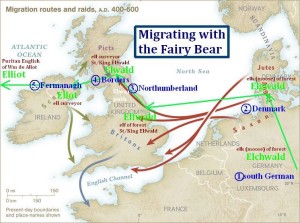


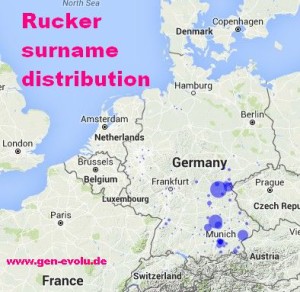
[…] Armstrong Fairbain Origins; […]